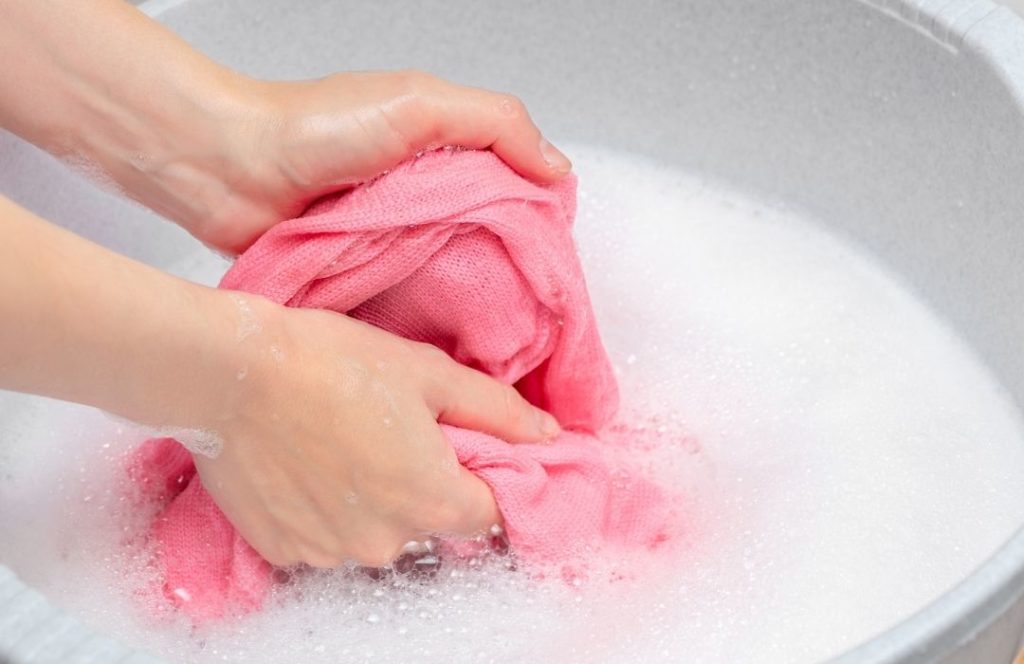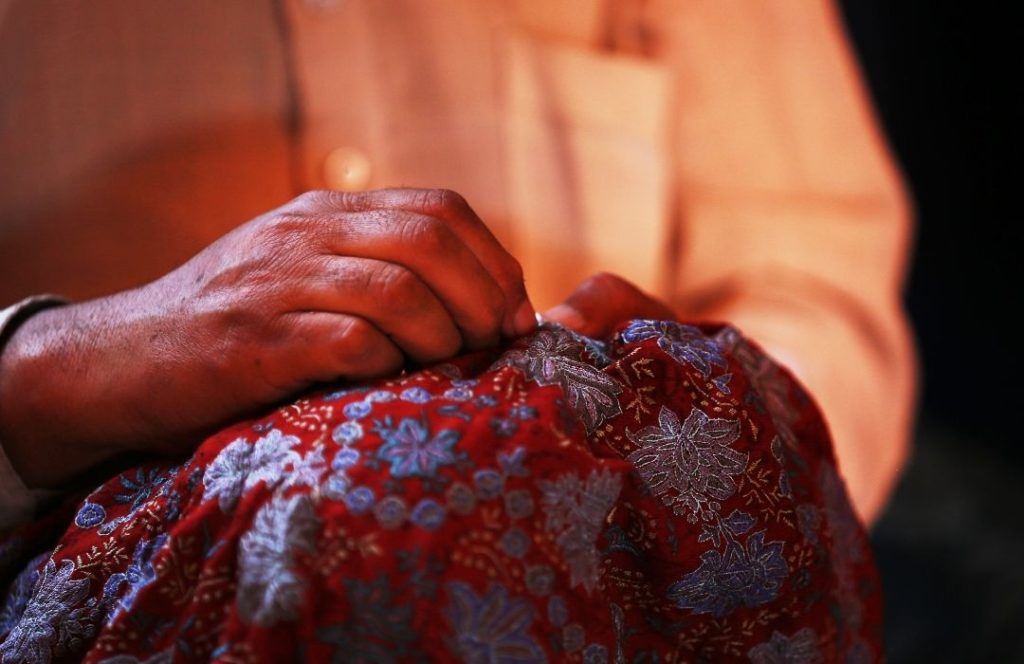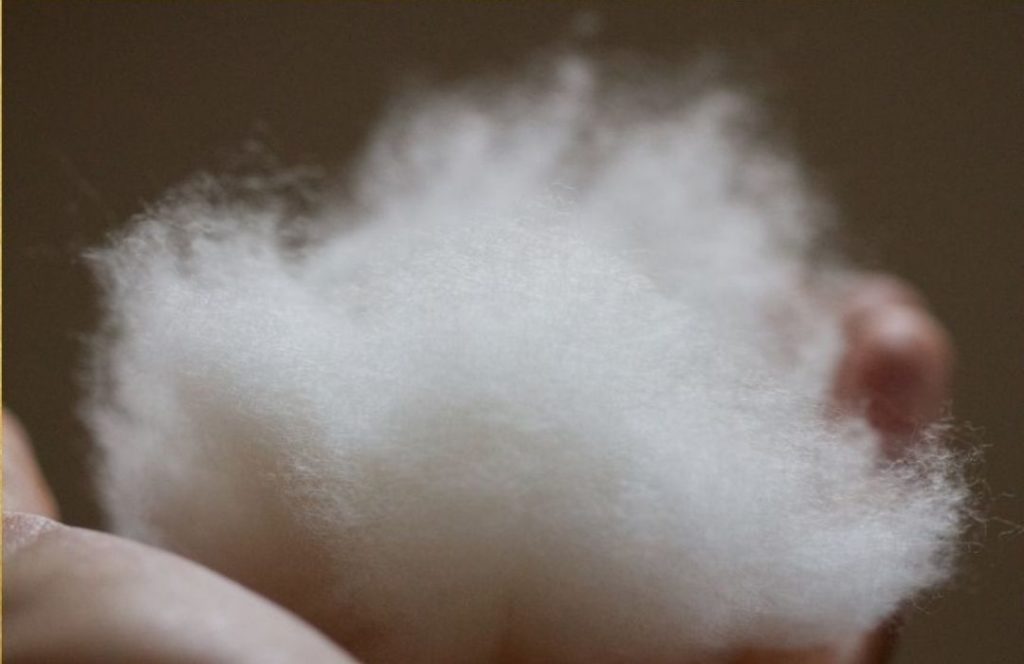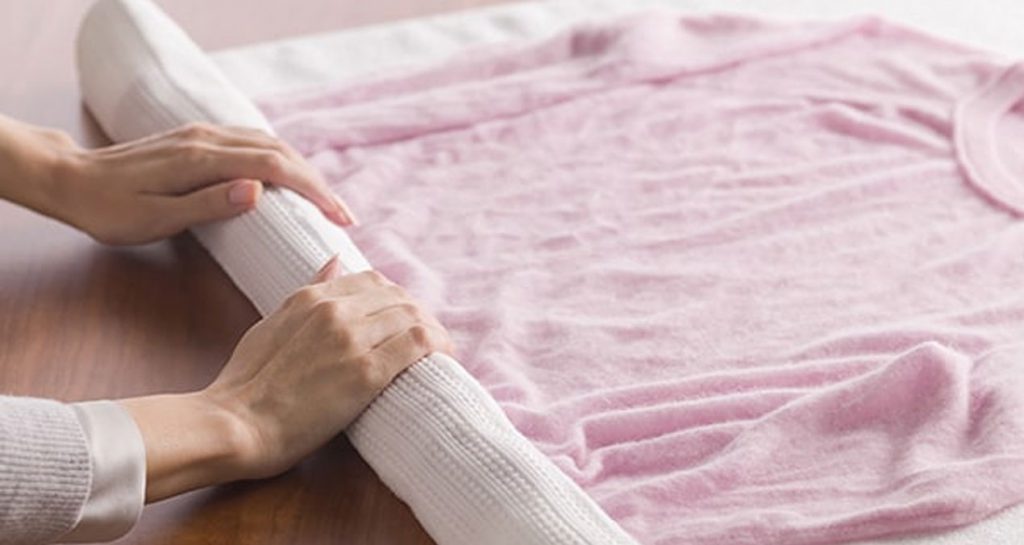Cashmere, often referred to as "soft gold," is a fabric like no other. Derived from the fine undercoat of Himalayan goats, it exudes unparalleled softness, warmth, and luxury. While cashmere garments are renowned for their exquisite quality and comfort, they also demand special care and attention. In this blog, we delve into why caring for cashmere matters, exploring the significance of ethical sourcing, responsible washing and storage, and the environmental impact of this precious fiber.
Ethical Sourcing: The Well-being of Cashmere Goats
Caring for cashmere begins at its source—the goat. These animals are central to the production of this luxurious fiber, and their well-being is a cornerstone of ethical cashmere sourcing. Ethical practices ensure that the goats are treated with respect and compassion, contributing to the overall quality of the fiber.

Sustainable herding practices involve maintaining healthy herds of Cashmere goats while preserving the delicate ecosystems in which they live. This includes responsible grazing, land management, and efforts to prevent overgrazing and habitat degradation.
Additionally, ethical cashmere production places a strong emphasis on humane shearing techniques. The goats should be sheared skillfully and without causing them stress or harm. Responsible producers prioritize the well-being of the animals during this process.
Responsible washing and care

Cashmere garments, including scarves, sweaters, and shawls, require gentle care. Hand washing is the preferred method to maintain the softness and longevity of cashmere. Cold water and a mild detergent specifically designed for delicate fabrics are essential.
Agitating cashmere can lead to stretching, distortion, and potential damage to the fibers. When washing, avoid wringing or twisting the fabric. Instead, gently press out excess water.
To maintain the shape and texture of cashmere, it should be dried flat on a clean towel. Avoid hanging it, as this can cause stretching. Ensure it is kept away from direct sunlight or heat sources to prevent fading or damage.
Cashmere is susceptible to damage from moths, particularly when stored for extended periods. Preventative measures such as using cedar or lavender sachets or storing the garments in airtight containers can help protect your luxury fabric from moth infestations.
Prolonging Longevity
If your cashmere garment develops wrinkles or creases, it's advisable to use a handheld steamer on the lowest setting to gently smooth them out. Alternatively, hanging the garment in a steamy bathroom while you shower can help release wrinkles naturally.
Regularly inspect your garments for signs of wear or damage. Small snags or holes can often be repaired by a professional, prolonging the life of your cherished pieces.
Environmental Impact
Sustainable cashmere production aims to minimize the environmental impact of cashmere farming and processing. This includes responsible grazing practices, water conservation, and efforts to reduce overgrazing and habitat degradation.
Caring for cashmere also ties into the larger issue of sustainability in the fashion industry. Opting for quality pieces and taking proper care of them discourages the disposable fast-fashion culture, where garments are quickly discarded, contributing to waste and environmental damage.
Caring for cashmere encourages responsible consumption. When we invest in high-quality, durable items and care for them properly, we reduce the need for frequent replacements, thus reducing our overall environmental footprint.
Preserving Tradition and Craftsmanship

Cashmere production often involves skilled artisans who have honed their craft over generations. By caring for your pricey garments, you support these artisans and the preservation of their traditional techniques.
Proper care ensures that your garments retain their quality and luxurious feel over time. It allows you to enjoy the same comfort and elegance years after your initial purchase.
A Testament to Luxury and Responsibility
Caring for cashmere is about more than maintaining the quality of a garment; it encompasses ethical sourcing, responsible practices, and environmental awareness. It's a commitment to preserving the well-being of Himalayan goats, supporting artisanal craftsmanship, and making conscious choices in a world driven by fast fashion. When you care for your cashmere, you not only enjoy the unmatched comfort and elegance it provides but also contribute to a more sustainable and responsible fashion industry. Cashmere is a testament to luxury and responsibility, and by cherishing it, you become a part of a broader movement towards a more conscious and caring world.
The Delicate Nature of Cashmere

As delicate as it is luxurious, Cashmere requires special care to maintain its exquisite qualities over time. Here are a few points to keep in mind when one wants to take care of their precious scarf, shawl or wrap.
Fine Fibers, Vulnerable to Damage
The primary characteristic that sets cashmere apart is its fine fibers. Measuring a mere 12-15 microns in diameter, these delicate threads are the secret behind cashmere's unparalleled softness. When you touch a cashmere garment, you experience a level of gentleness against the skin that is second to none.
While cashmere's fine fibers provide a luxurious sensation, they also make the fabric susceptible to damage. Unlike coarser materials, cashmere can be more prone to pilling, snags, and stretching. Recognizing its vulnerability is the first step in understanding why it requires tender care.
Gentle Washing Techniques
Hand washing is the most preferred way to wash a Cashmere scarf, shawl or wrap. To preserve the delicate nature of this delicate fabric, hand washing is the preferred method. This process requires minimal agitation, protecting the fibers from damage. Here's a step-by-step guide:
- Use Cold Water: Fill a basin or sink with cold water. Cashmere should never be exposed to hot water, as it can cause shrinkage and loss of softness.
- Choose the Right Detergent: Opt for a mild detergent specifically designed for delicate fabrics. Avoid using harsh chemicals or detergents that contain bleach. Markets are filled with Cashmere shampoo. Invest in a good quality shampoo and watch your scarf or shawl become softer with each wash.
- Gently Submerge: Immerse your cashmere garment in the water and gently press it down to allow the detergent to penetrate. Avoid rubbing or scrubbing, as this can cause friction and damage. Let the fabric naturally lose any dirt or dust attached to it.
- Soak and Rinse: Let the garment soak for a brief period (about 5-10 minutes), then carefully lift it out of the water without wringing or twisting. Empty the basin and refill it with clean, cold water. Rinse the garment gently until all detergent is removed.
- Avoid Agitation: Agitation is one of the primary culprits behind damage to cashmere. Vigorous rubbing, squeezing, or wringing can lead to stretching, distortion, and potential breakage of the fibers. Handle your cashmere with care at every stage of washing.
Drying Flat: Protecting Shape and Softness

Cashmere should always be dried flat on a clean, dry towel. This technique helps maintain the garment's shape and prevents stretching, which can occur when it's hung. Here's how to do it:
- Lay Flat: After rinsing, gently lay the cashmere garment flat on a clean towel. Gently reshape it to its original dimensions, ensuring that it retains its intended shape.
- Pat Dry: Gently press the garment with another dry towel to absorb excess water. Avoid wringing or squeezing.
- Air Dry: Leave the cashmere garment in a well-ventilated area away from direct sunlight or heat sources. Allow it to air dry naturally, which may take some time but is essential for preserving softness and shape.
Preventing Moth Damage: Safeguarding the Fibre
Cashmere is a favourite target of clothes moths, especially when stored for extended periods. These pests are drawn to natural fibers and can cause irreparable damage if left unchecked.
To protect your cashmere investments from moth infestations, consider these preventative measures:
- Cedar and Lavender: Natural moth repellents like cedar blocks or lavender sachets can help deter moths. Place them in your storage areas to create a protective barrier.
- Airtight Storage: Consider storing your cashmere in airtight containers or vacuum-sealed bags to prevent moths from accessing your garments.
- Regular Inspection: Periodically inspect your luxury scarves and garments for any signs of moth damage, such as small holes or loose fibers.
Dealing with Wrinkles: A Gentle Touch
Cashmere garments can develop wrinkles or creases, especially when stored for extended periods. To address this issue, use a handheld steamer on the lowest setting to gently smooth out wrinkles. Alternatively, you can hang the garment in a steamy bathroom while you shower to allow the wrinkles to naturally release.
If you choose to iron your cashmere, do so with caution. Use the lowest heat setting and place a cloth between the iron and the scarf/shawl/garment to avoid direct contact. Keep the iron moving to prevent burning or scorching.
Repair and Maintenance
Regularly inspect your cashmere scarves for signs of wear or damage. Small snags or holes can often be repaired by a professional. Addressing such issues promptly can extend the life of your cherished pieces. When not in use, store your scarves properly. Clean them, ensure they are completely dry, and fold them neatly before placing them in a cool, dry storage area. Avoid hanging cashmere, as this can de-shape the fabric.
What will happen if one neglects Cashmere?
Neglecting the care of cashmere garments or wraps can lead to a host of issues that diminish the fabric's exceptional qualities. It will poorly affect the appearance, comfort, and longevity. Here are some ill effects of neglecting the luxury fabric.
Diminished Softness
One of the most striking characteristics of cashmere is its remarkable softness. However, when it isn't cared for properly, this softness can quickly deteriorate. The fine fibers become matted, rough, and less gentle against the skin
Discomfort when Wearing
Neglected cashmere garments and wraps can become scratchy and uncomfortable. This is particularly noticeable in items like scarves, sweaters, and shawls, which are meant to provide warmth and comfort during the colder months.
Increased Piling
Pilling is the formation of small, unsightly balls of fiber on the surface of a fabric. Neglected scarf is prone to pilling, especially in areas that experience friction, such as underarms, elbows, and sides. Pilling can make your garments look worn and unattractive.
Pilling and wear can significantly affect the appearance of your cashmere items. They appear aged, worn, and less elegant. This can be particularly disheartening if you've invested in high-quality cashmere pieces.
Loss of Shape
Cashmere, when not properly cared for, can lose its shape. Stretching and distortion can occur when the fabric is hung or stored improperly. This not only affects the appearance but also the fit of your garments. Scarves made from Cashmere may lose their shape which compromises both comfort and style.
Loss of Colour Vibrancy
Exposure to sunlight and improper washing can lead to fading and discolouration of garments. Colours become dull, and the vibrancy that once characterized your pieces can be lost.
Fading and discolouration can result in an inconsistent appearance, with some areas appearing lighter or more discoloured than others. This can make your cashmere items appear worn and uneven.
Weakened Fibers, Difficult to repair
Neglected cashmere fibers can weaken over time, making them more susceptible to damage. The fabric may become thinner, and the risk of snags and tears increases. Once Cashmere fibers are damaged or weakened, repairing them becomes more challenging. It may be more costly and less effective to fix neglected items compared to well-maintained ones.
Attracting Moths
Moths are drawn to natural fibers, especially when garments are stored for extended periods without protection. Neglected cashmere can become a target for moths, leading to unsightly holes and damage. Moth damage can be irreversible. Once holes appear, it's challenging to restore the affected areas to their original condition.
Shortened Lifespan
Neglect accelerates the ageing process of Cashmere. Garments and wraps that are not cared for properly may have a significantly shorter lifespan compared to those that receive regular attention and maintenance. Investing in quality should come with the expectation of longevity, provided the fabric is properly cared for.
Sustainability Concerns
As consumers, our choices can impact the fashion industry's sustainability efforts. Neglecting cashmere garments may encourage fast-fashion habits, where items are quickly discarded and replaced, contributing to resource-intensive production processes.
Caring for Cashmere in Travel
Caring for cashmere while travelling requires a few extra considerations to ensure your garments remain in excellent condition. Here are some tips on how to care for your gentle baby while on the go:
Pack Carefully
When packing these products, fold them neatly to minimize creasing. Avoid overpacking, as it can cause unnecessary pressure on the fibers. It's best to place cashmere items in a breathable garment bag or wrap them in tissue paper to protect them from dust and potential snags.
Optimal Storage
During your travels, store your wraps in a cool, dry place. Avoid placing them in areas exposed to direct sunlight or excessive heat, as this can cause fading or damage to the fibers. If possible, use a garment organizer or compression bag to keep your cashmere items protected and compactly stored.
Avoid Wrinkles
To minimize wrinkles, gently shake out your cashmere items after unpacking them. Do not hang wrap and shawls as they may lose shape. Just lay them flat for a short while, allowing any minor creases to naturally release. Avoid using excessive pressure or ironing cashmere, as it can flatten the fibers and compromise the garment's softness.
Spot Clean and Refresh
If you encounter a small stain or spill while traveling, address it promptly by spot cleaning the affected area. Use a gentle, cashmere-specific spot cleaner or a mild detergent mixed with water. Gently dab the stain with a clean cloth or sponge, being careful not to rub or agitate the fibers. Once cleaned, gently blot the area with a clean, damp cloth to remove any residue. Allow the cashmere to air dry completely before wearing it again.
Air Out Your Cashmere
Cashmere benefits from occasional airing to keep it fresh during travel. At times, lay your cashmere items in a well-ventilated area to allow air circulation. This helps remove any accumulated odours and revitalizes the fibers.
Minimize Washing
Cashmere does not require frequent washing, as it is naturally resistant to odours and stains. Instead of washing after every wear, opt for spot cleaning and refreshing techniques to maintain the cleanliness. By doing so, you can preserve the quality and extend the time between washes.
Hand Wash or Dry Clean
When it's time for a thorough clean, follow the care instructions provided by the manufacturer. Hand washing is the preferred method for cashmere, using a gentle detergent or a mild wool wash. Gently agitate the garment in lukewarm water, taking care not to stretch or wring it. Rinse thoroughly and press out excess water without twisting. Alternatively, if you prefer professional cleaning, choose a reputable dry cleaner experienced in handling this delicate fabric.
Proper Storage
If you're on an extended trip and won't be wearing your cashmere items for some time, ensure you store them properly. Clean and completely dry the garments before folding them and placing them in a breathable storage bag or container. Add a moisture-absorbing packet or a sachet of natural moth repellent to protect them from potential pests.
How do I fix a hole in my Cashmere?
The worst nightmare for a Cashmere owner is irreparable damage to their product. A number of times, buyers tell us that their scarves or shawls had hole in them, especially during travel days. Thankfully, repairing a hole in your garment is possible with a few simple steps. Here is how to fix a hole in your luxury piece:
Collecting the Necessary Tools
To repair a hole in your cashmere wrap (shawl or scarf), you will need a few basic tools, including a sewing needle, matching thread (preferably in a colour that closely matches your cashmere), small scissors or thread snippers, and a pin or safety pin.
Prepare the Cashmere wrap
Start by laying your wrap on a clean, flat surface. Smooth out any wrinkles or creases around the area where the hole is located.
Secure the Hole
To prevent the hole from expanding or getting larger during the repair process, you need to secure it. Place a pin or safety pin on each side of the hole, perpendicular to the hole itself. This will keep the fabric in place and prevent it from moving as you mend the hole.
Thread the Needle
Thread the needle with a strand of matching thread. Make sure the thread is long enough to complete the repair without running out.
Begin Stitching
Starting from the backside of the wrap, insert the needle into the fabric just outside the hole, making sure to catch a few fibers of the cashmere. Then, bring the needle back out through the fabric on the opposite side of the hole. Repeat this process, creating a series of small stitches across the hole, gradually closing it up.
Reinforce the Stitches
To reinforce the repair and ensure longevity, create a second row of stitches just below the first row. This will add extra strength and stability to the repaired area. Continue stitching until the hole completely closes.
Knot the thread
Once you have finished stitching, knot the thread on the backside of the wrap. To do this, pass the needle through a few stitches on the back, creating a loop. Pass the needle through the loop, pulling it tight to form a knot. Repeat this step once or twice to secure the thread.
Trim Excess Thread
Using small scissors or thread snippers, carefully trim any excess thread from the repaired area, making sure not to cut the surrounding fabric. This will give your repair a neat and tidy finish.
Care for Your Precious Piece
After repairing the hole, it's essential to care for your cashmere properly. Follow the care instructions provided by the manufacturer, which usually involve gentle hand washing or dry cleaning. Handle your repaired cashmere garment with care to maintain its beauty and longevity.
Also read:
How often do you need to wash cashmere?
Concluding

Cashmere can live up to more than 30 years if cared for properly. Be it during travel or routine life, caring for it works wonders. One has to take extra care of this super gentle fabric. Be it wearing, washing, drying, or storage, a Cashmere wrap will only regain its longevity when one properly cares for it.
Also read: What should you not do with Cashmere?